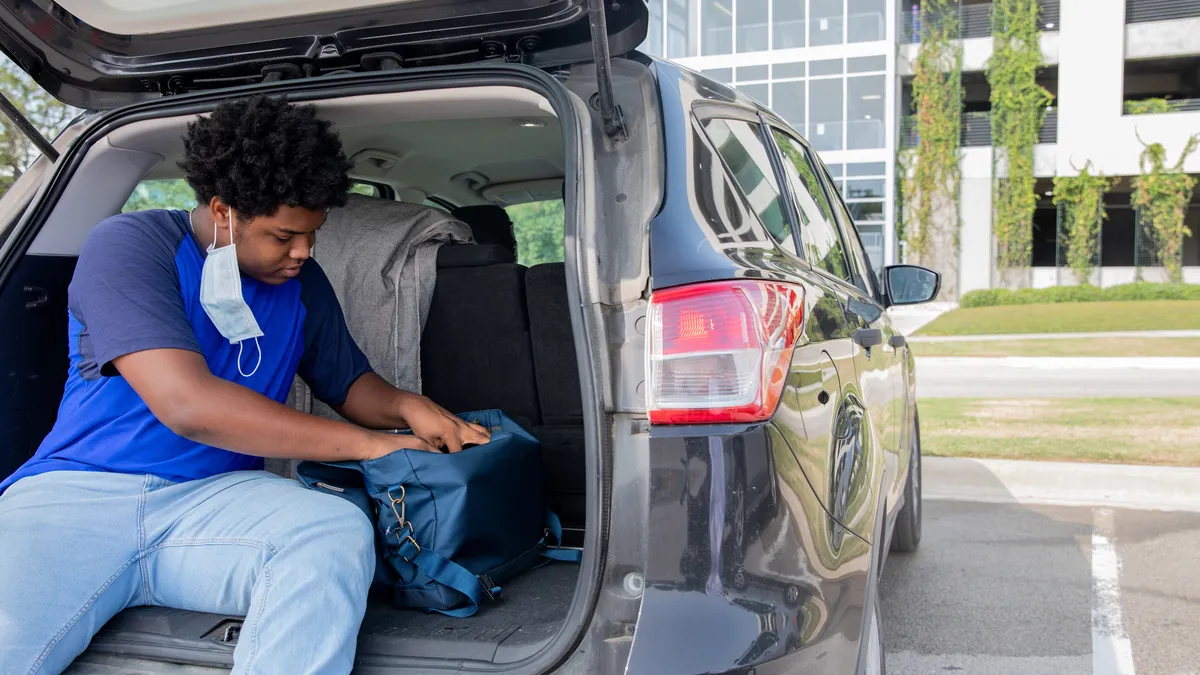As schools worked to provide meals, laptops, hotspots and other basics for students during the first full school year of the pandemic, homeless student liaisons at school districts reported having a difficult time reaching and providing for homeless students.
In November, the National Center for Homeless Education, with funding from the U.S. Department of Education, released numbers confirming what liaisons had been reporting anecdotally since the start of the pandemic. Here are four charts showing how the pandemic affected this population:
Yearly change in enrollment more volatile among homeless students
Homeless student enrollment has always been more volatile relative to the general student population and other student subgroups.
"The number of students experiencing homelessness often increases or decreases more than other groups each year due to a variety of economic, social, and environmental factors; other groups of students remain relatively unchanged more often," according to one of multiple NCHE reports released in November. For example, Hurricane Harvey in school year 2017-18 nearly doubled the number of homeless students in Texas.
COVID-19, however, brought changes to enrollment for both the general and homeless student populations. While the general student population was relatively steady approaching the pandemic, it dropped 3% during the pandemic's first full school year. By comparison, the homeless student enrollment had already been dropping and decreased even further — by 14% — in the 2020-21 school year.
Homeless student enrollment decreases more than previous years
This drop in homeless student enrollment is likely due to challenges district liaisons faced in identifying homeless students after school buildings shut down.
"It's not because magically they got housing," said Barbara Duffield, executive director of SchoolHouse Connection, which works closely with homeless student liaisons. "It's clearly the impact of virtual learning and not being able to stay in touch with families because of the mobility that they were going through."
According to a 2020 survey of 1,444 McKinney-Vento liaisons, respondents blamed the drop in homeless student enrollment on the "inability to identify families/youth due to learning/school building closures." Of liaisons who indicated that homeless student identification fell during the first full school year of the pandemic, 70% cited inability to find these students as the primary reason.
Portion of students chronically absent increased
As homeless student enrollment dropped, chronic absenteeism among those students increased to rates higher than prior to the pandemic.
However, NCHE reports that these numbers may be inflated. Considering absenteeism is reported at the school rather than district level, it is possible students were enrolled and chronically absent in multiple schools at once.
Majority states identified less homeless students during pandemic
Very few states showed an increase in identification of homeless students in light of the challenges that came with COVID-19 school closures. While most states identified fewer of these students than in previous years, Iowa, Montana, South Carolina and Vermont identified more.
NCHE program specialist Suzanne Peck called these increases the result of "dogged determination."
"There were some places where identification wasn't necessarily impacted and they were able to do that outreach," Peck said. "Those individual states … really put some focus on family engagement and they really did some amazing things with reaching out during the pandemic."
Anecdotal evidence suggests homeless student enrollment for the 2021-22 school year is rebounding, said Duffield.
"But the question is: What happened to the students who went missing?" Duffield asked. "They could be homeless in another school district and not identified. They could have dropped out. And we don't know."












